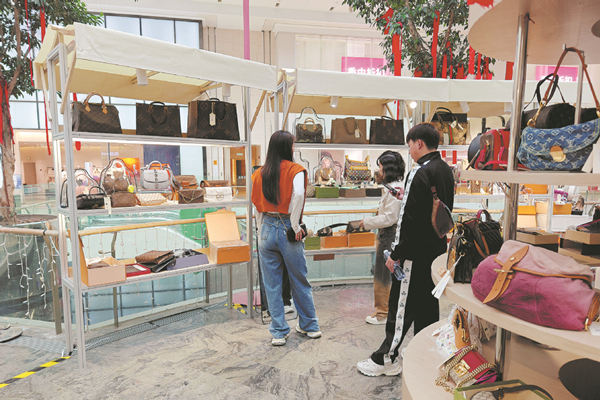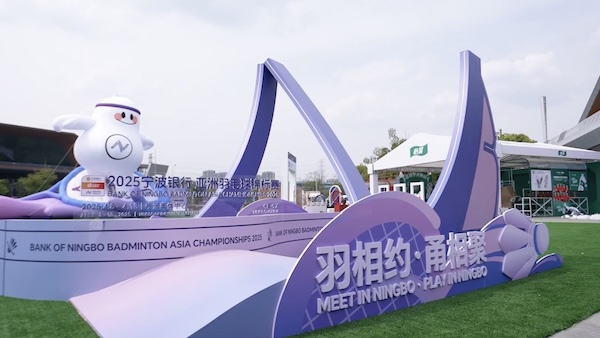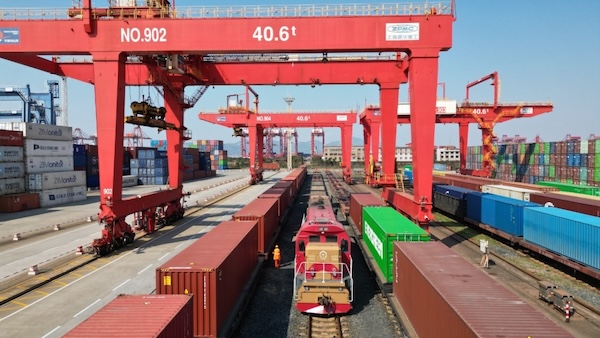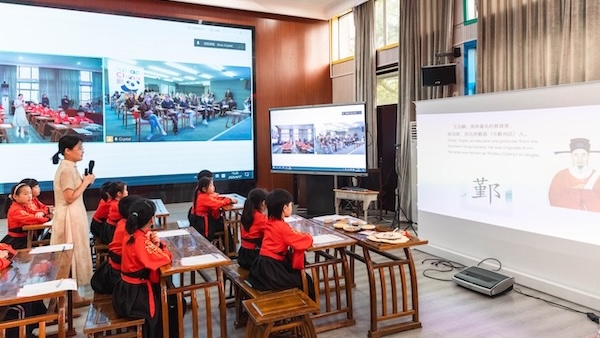Used luxury goods hot online

Consumers browse secondhand luxury products at a shopping mall in Shanghai in October. WANG GANG/FOR CHINA DAILY
Buyers, sellers of premier brand secondhand merchandise embrace e-commerce wave
China's secondhand luxury goods market is expected to embrace the most intense competition this year after nearly a decade of development, and online platforms have increasingly become important shopping channels for consumers, a new report said.
Fueled by the rapid growth of short video platforms and livestreaming sessions, competition in the pre-owned luxury goods market in China has become increasingly fierce, said an industry report released in April by the University of International Business and Economics in Beijing and the China Entry-Exit Inspection and Quarantine Association.
China's turnover rate for secondhand luxury products follows rates in the United States, Japan, the United Kingdom and France. The turnover rate in the US was higher than 30 percent in 2021, tops globally, the report said.
"With continued willingness to spend from high-income individuals, and the pursuit of consumption upgrade by middle-income consumers, the luxury market in China has maintained a strong growth momentum," said Wang Lixiang, an official of the luxury professional committee at the association.
Chinese consumers aged between 29 and 41 have become the core demographic for pre-owned luxury product purchases, supported by their ample spending appetites and capability.
In addition, there has been growing demand from Gen Z consumers — those born between the mid-1990s and the early 2000s — and they are more likely to purchase vintage products or those with unique designs or limited editions, the report said.
Melissa Liu, a 31-year-old office employee in Beijing, bought a secondhand Chloe bag recently from a store for less than 3,000 yuan ($415). She said it was significantly cheaper than a brand-new bag and the condition of the bag was quite good.
With frequent interactions on social media platforms and short-video platforms by young consumers, it has become easier for people to find different styles and make purchases, the report said.
China's luxury market experienced a strong rebound in 2023 after the country optimized its COVID-19 response measures, and it is projected that China's luxury market will experience mid-single-digit growth this year, although it's not yet back to the highs of 2021, said consultancy Bain & Co.
The fundamentals of luxury consumption in China remain strong over the long run, although there are uncertainties in the near term, such as the speed of consumer confidence recovery and the growth of luxury shopping overseas, Bain & Co said.
For luxury products purchases, 53 percent of consumers made purchases from domestic brick-and-mortar stores, while 42 percent of the total transactions were made online, and 5 percent of consumers conducted such shopping overseas, said the UIBE report.
A strong luxury market has fueled the growth of China's secondhand luxury goods market, and it has grown to such a size that the potential value of all the products that could be traded could exceed 3 trillion yuan, said the Yaok Institute, a market research firm.
Zhang Zhigang, former vice-minister of the Ministry of Commerce, said the government, research institutions and the business community should utilize their respective strengths and specialties to lead the standardized development and healthy growth of the secondhand luxury goods market in China.
"If conditions mature, we hope the sector can integrate with the Chinese national high-end consumer goods market and contribute to the growth and circular development of Chinese high-end brands," Zhang said.
He added that China should foster more talent focused on secondhand luxury goods identification, improve the scientific and data-driven features of the identification process, and pay attention to the setting of standards.
In the pre-owned luxury goods market, concerns about authenticity remain the biggest issue affecting consumers' decisions, given the high unit price of luxury products. The healthy development of appraisal institutions has a crucial impact on the growth of the secondhand trading market, the report said.
In 2023, the number of secondhand luxury goods appraised by different institutions in China reached 10 million pieces, up 35 percent year-on-year, the report found.
"Louis Vuitton was the brand that recorded the highest number of identification demand in the handbag category last year, the most frequently transacted category, and Rolex tops the identification demand among watches," said Zhang Mengxia, director of Luxury China at the UIBE.
"During holidays such as Valentine's Day, Christmas and New Year, sales far exceed ordinary time, indicating that consumers would like to spend for emotional value. Retailers usually make good use of holidays for promotions and achieve significant business growth," Zhang said.
Last year, the trading volume of handbags accounted for half of the total secondhand luxury goods trading market, given their various styles and practical functions. It was followed by jewelry, clothing and footwear, which made up 17 percent and 14 percent of the total, respectively, the report said.
For secondhand luxury goods trading in China, total consumption volume was highest in Beijing last year. It was followed by Shanghai; Shenzhen, Guangdong province; Chengdu, Sichuan province; and Guangzhou, Guangdong, the report found.
Secondhand luxury consumers who live in first-tier cities accounted for more than 35 percent of the total nationwide, as they have a high recognition of secondhand luxury products and strong purchasing power.
Encouraged by the increasing development of online secondhand luxury trading platforms, smaller cities also become markets where platforms are seeking future growth. With a large population base, smaller Chinese cities boast growth potential in secondhand luxury products trading in the future, the report said.
Despite the fast growth of the secondhand luxury trading market in China, the penetration rate of the market is lower than 10 percent and still in its early stage of development. The figure is far below that of the US, Japan and Europe, though young Chinese consumers have shown an increasing appreciation for secondhand products.
Secondhand luxury trading platform Hongbulin said more than 70 percent of its users are both buyers and sellers at the same time. The business performance of the company last year was significantly better than expected, and both supply and demand of products showed continued growth.
"In this era of material development, people have been thinking about increasing the rate of recycling. Circular consumption is more in line with the consumption mindset of the younger generation, and it is increasingly becoming the new consumption trend," said Xu Wei, founder and CEO of Hongbulin.
"By leveraging advanced internet technologies, we would like to provide standardized services, manage the life cycle of products, and help consumers to shape more environmentally friendly consumption habits," Xu said.

 Ningbo seabird project seeks international volunteers
Ningbo seabird project seeks international volunteers  Jakub's journey: From shipyard to sea
Jakub's journey: From shipyard to sea  Badminton Asia COO applauds Ningbo
Badminton Asia COO applauds Ningbo 


